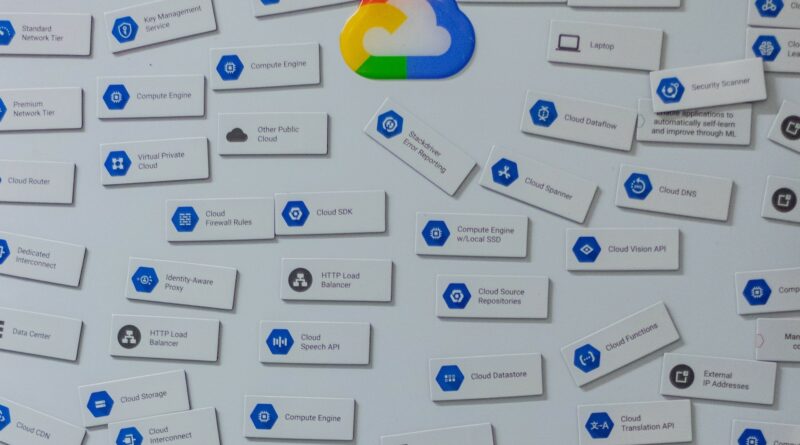Google Cloud Adoption Framework: A Closer Look
Introduction
As more and more enterprises migrate to the cloud, it’s becoming increasingly clear that a well-planned and executed migration strategy is essential for success. But with so many cloud providers and services to choose from, it can be challenging to know where to begin.
Enter the Google Cloud Adoption Framework. This comprehensive framework provides a structured approach to cloud adoption, designed to help organizations successfully move to Google Cloud and reap the benefits of cloud technology.
In this post, we’ll provide an overview of the Google Cloud Adoption Framework and the key components involved in successfully adopting Google Cloud. I will also explore best practices for implementing the framework and provide real-world examples of companies that have successfully used the framework to migrate to Google Cloud.
What is the Google Cloud Adoption Framework?
The Google Cloud Adoption Framework is a structured approach to cloud adoption, designed to help organizations migrate to Google Cloud and optimize their use of cloud technology. The framework consists of four stages: Assess, Plan, Implement, and Optimize.
Each stage involves specific activities and considerations to ensure a successful cloud migration. The framework is designed to be flexible and can be adapted to meet the unique needs of each organization.
Key Components of the Google Cloud Adoption Framework
1. Assess: The first stage of the framework is the Assess stage, which involves taking stock of your current IT environment and identifying potential workloads to migrate to the cloud. This stage is critical for establishing a baseline for your migration and identifying any potential roadblocks that may need to be addressed.
2. Plan: The Plan stage involves developing a comprehensive migration plan, including timelines, resource allocation, and cost estimates. This stage is essential for ensuring that your migration is well-organized and executed efficiently.
3. Implement: The Implement stage is where the actual migration takes place. This stage involves moving workloads to the cloud, configuring cloud services, and ensuring that everything is working correctly. This stage can be complex and time-consuming, but it’s essential for a successful migration.
4. Optimize: The final stage of the framework is the Optimize stage, which involves ongoing optimization and refinement of your cloud environment. This stage is critical for ensuring that you’re getting the most out of your cloud investment and continuously improving your operations.
Best Practices for Implementing the Google Cloud Adoption Framework
To ensure a successful migration to Google Cloud, there are several best practices that organizations should follow when implementing the Google Cloud Adoption Framework.
- Executive sponsorship and stakeholder engagement: Successful cloud adoption requires buy-in from all levels of the organization, including executives, IT staff, and end-users. Establishing executive sponsorship and engaging stakeholders early on in the process can help ensure that everyone is on board and working towards a common goal.
- Identifying and prioritizing workloads: Not all workloads are created equal when it comes to cloud migration. Identifying and prioritizing workloads based on factors such as complexity, criticality, and compatibility with cloud services can help ensure that your migration is well-organized and executed efficiently.
- Building a solid foundation for cloud governance and security: Cloud governance and security are critical considerations for any cloud migration. Establishing a solid foundation for governance and security can help ensure that your cloud environment is secure, compliant, and efficient.
- Leveraging automation and DevOps practices: Automation and DevOps practices can help streamline the migration process, reducing the risk of errors and increasing efficiency. Leveraging automation and DevOps practices can also help ensure that your cloud environment is scalable, reliable, and easy to manage.
- Measuring success and optimizing over time: Cloud adoption is an ongoing process, and it’s essential to continually measure success and optimize your cloud environment over time. Establishing metrics for success, such as cost savings or performance improvements, can help you track progress and identify areas for improvement. Regularly reviewing and refining your cloud environment can help ensure that you’re getting the most out of your cloud investment.
Real-World Examples of the Google Cloud Adoption Framework in Action
There are many examples of companies that have successfully used the Google Cloud Adoption Framework to migrate to Google Cloud. Here are just a few examples:
- Spotify: Spotify migrated to Google Cloud in 2016, and the company credits the Google Cloud Adoption Framework with helping them successfully migrate over 250 services to the cloud. The framework helped the company establish a clear migration plan and prioritize workloads for migration.
- HSBC: HSBC used the Google Cloud Adoption Framework to migrate to Google Cloud in 2020. The framework helped the company establish a solid foundation for cloud governance and security and enabled them to migrate critical workloads to the cloud quickly and efficiently.
- Colgate-Palmolive: Colgate-Palmolive used the Google Cloud Adoption Framework to migrate to Google Cloud in 2021. The framework helped the company identify and prioritize workloads for migration and establish a scalable and reliable cloud environment.
Conclusion
The Google Cloud Adoption Framework provides a structured approach to cloud adoption, designed to help organizations successfully migrate to Google Cloud and optimize their use of cloud technology. By following best practices for implementation and leveraging real-world examples of successful migrations, organizations can ensure that their cloud migration is well-organized and executed efficiently, resulting in improved operations and cost savings.





Your blog concisely demystifies the Google Cloud Adoption Framework, spotlighting its four-pillar approach and best practices like governance and automation. Real-world examples (Spotify, HSBC) underscore its efficacy, offering a blueprint for secure, strategic cloud transitions. A must-read for enterprises eyeing scalable, optimized cloud adoption!